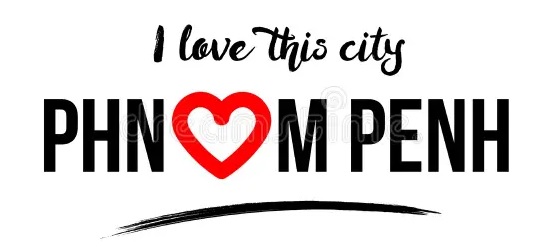Cambodia is a country with a long and complex history, and its culture reflects its diverse influences and experiences. One of the most prominent and distinctive aspects of Cambodian culture is its dance, which consists of three main categories: classical dance, folk dance, and social dance. Each category has its own history, style, and purpose, and together they form a rich and diverse artistic expression of the Cambodian identity.
Classical dance
Classical dance, also known as court dance or royal ballet, is the most prestigious and refined form of Cambodian dance. It originated from the royal courts of the ancient Khmer Empire, where it was performed as a sacred ritual to honor the gods and kings, as well as to entertain the nobility and guests. Classical dance is characterized by its elaborate costumes, intricate gestures, and slow and graceful movements. The dancers wear silk brocade dresses, golden crowns, and jewelry, and their fingers are curved to form symbolic shapes. The dancers also use their facial expressions to convey emotions and meanings. The music that accompanies classical dance is played by a pinpeat ensemble, which consists of traditional instruments such as gongs, xylophones, flutes, drums, and oboes.
Classical dance has a rich repertoire of dances that depict stories and themes from Hindu mythology, Buddhist legends, Khmer history, and royal ceremonies. Some of the most famous classical dances are:
- The Apsara Dance: This dance portrays the celestial nymphs who are the guardians of the arts and culture in Hindu mythology. The dancers wear white dresses and headdresses with flowers, and they perform graceful and delicate movements to represent the beauty and charm of the apsaras. The Apsara Dance was created in the mid-20th century by Queen Sisowath Kossamak, who revived and popularized classical dance in Cambodia.
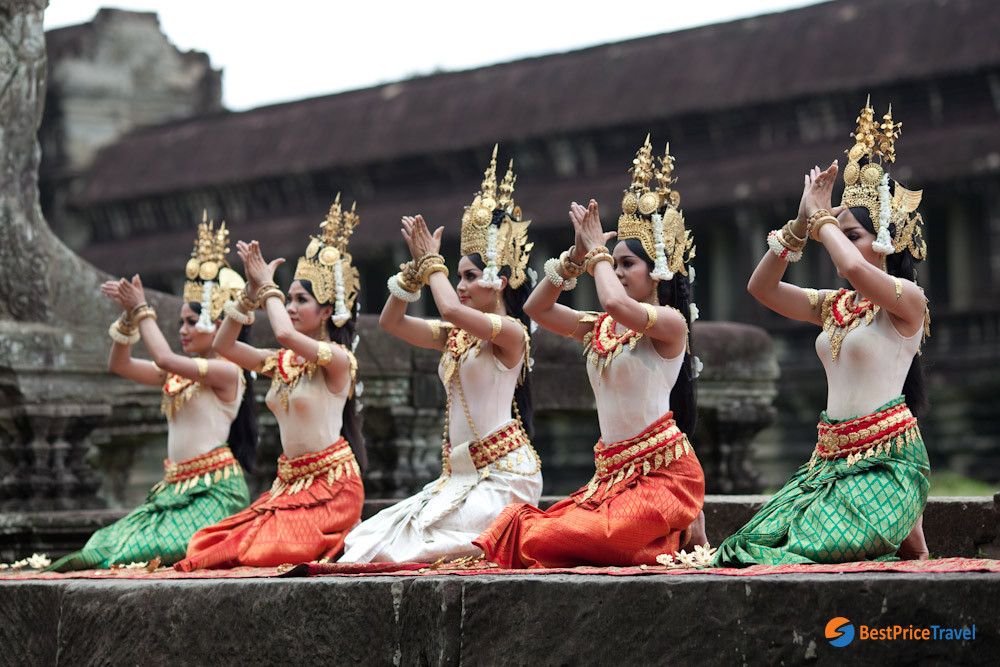
- The Robam Chuon Por: This dance is also known as the Wishing Dance or the Blessing Dance. It is performed by female dancers who hold candles in their hands and offer prayers and wishes to the audience. The dancers wear red dresses and headdresses with golden leaves, and they move in circular patterns to symbolize harmony and prosperity. The Robam Chuon Por is usually performed at the beginning or the end of a classical dance performance.
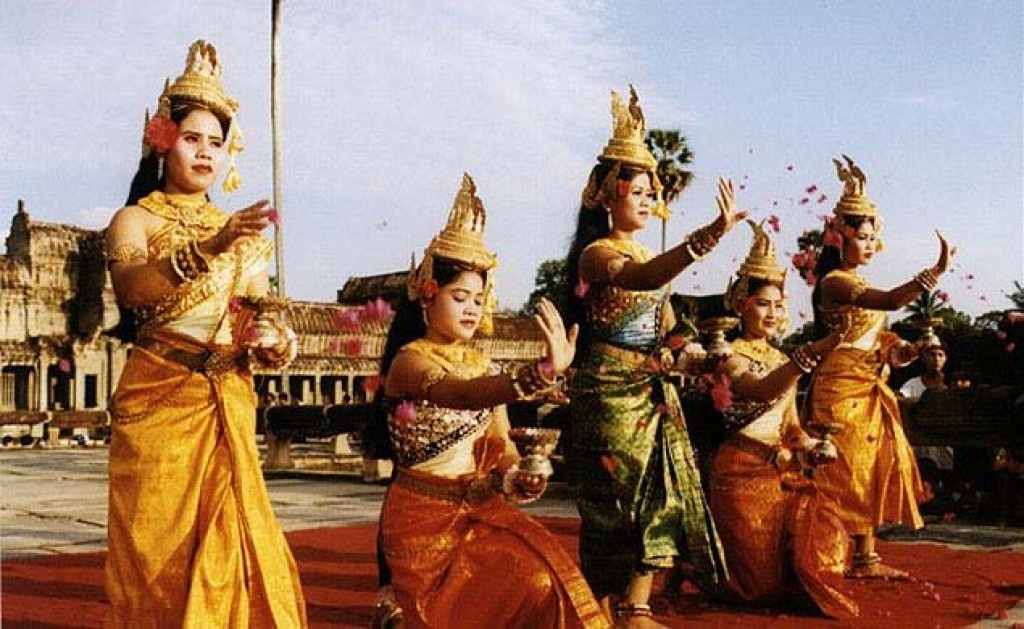
- The Reamker: This dance is based on the Ramayana, an epic poem from India that tells the story of Rama, Sita, Hanuman, and Ravana. The dancers wear colorful costumes and masks to portray the different characters in the story, such as monkeys, demons, giants, and gods. The Reamker is one of the oldest and longest classical dances in Cambodia, and it can take several days to perform.

Folk dance
Folk dance is a form of Cambodian dance that reflects the cultural traditions and lifestyles of the different ethnic groups and regions in Cambodia. Folk dance is usually performed by groups of dancers who wear simple costumes that represent their occupations or identities. Folk dance is more lively and energetic than classical dance, and it often involves props such as hats, baskets, scarves, or sticks. The music that accompanies folk dance is played by a mahori ensemble, which consists of instruments such as violins, guitars, drums, cymbals and flutes.
Folk dance has a variety of dances that depict the activities and celebrations of the Cambodian people, such as farming, fishing, hunting, wedding, and festivals. Some of the most popular folk dances are:
- The Robam Trot: This dance imitates the movements of a deer, which is a symbol of happiness and prosperity in Cambodia. The dancers wear deer horns on their heads and jump and run around the stage. The Robam Trot is usually performed during the Khmer New Year or other joyful occasions.
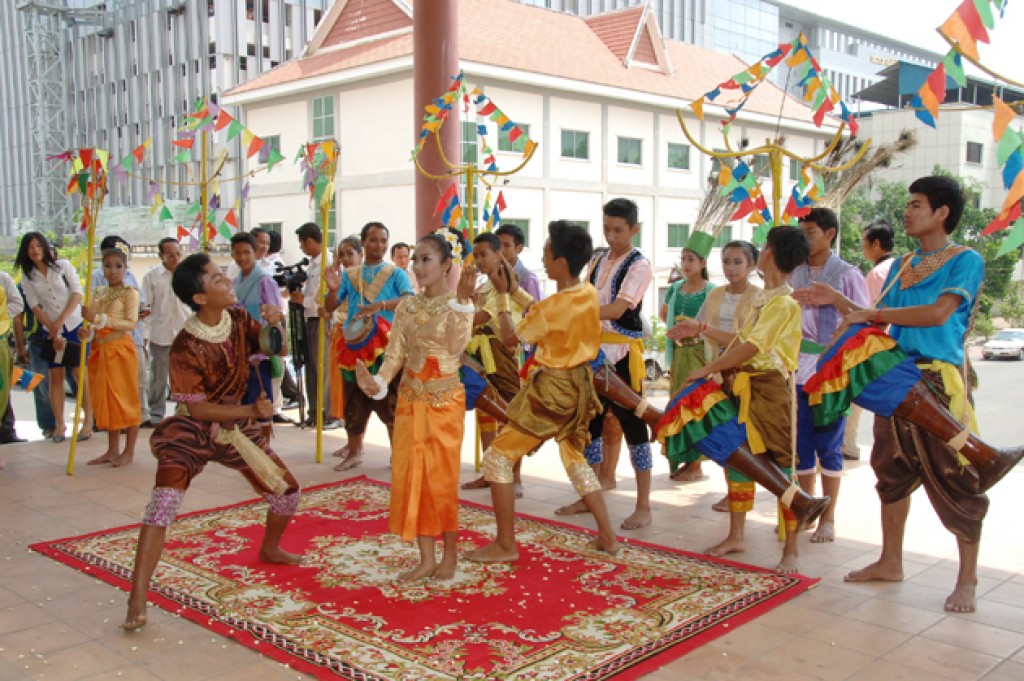
- The Robam Kngork Pailin: This dance portrays the peacock, which is a sacred bird in Cambodia. The dancers wear colorful costumes and feathered fans to mimic the peacock’s plumage and gestures. The Robam Kngork Pailin is often performed as a tribute to the former kingdom of Pailin, which was known for its peacocks and gemstones.
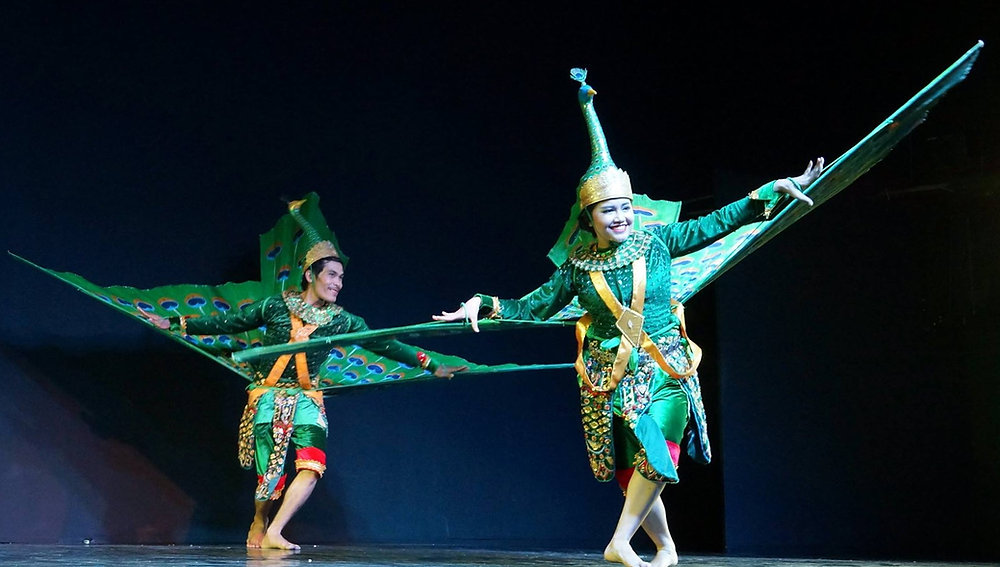
- The Robam Apsara Mera: This dance combines elements of classical and folk dance to create a modern and dynamic performance. The dancers wear white dresses and headdresses with flowers, similar to the classical Apsara Dance, but they also use bamboo poles to create rhythmic sounds and patterns. The Robam Apsara Mera is a tribute to the apsaras and their role in preserving and promoting Cambodian culture.
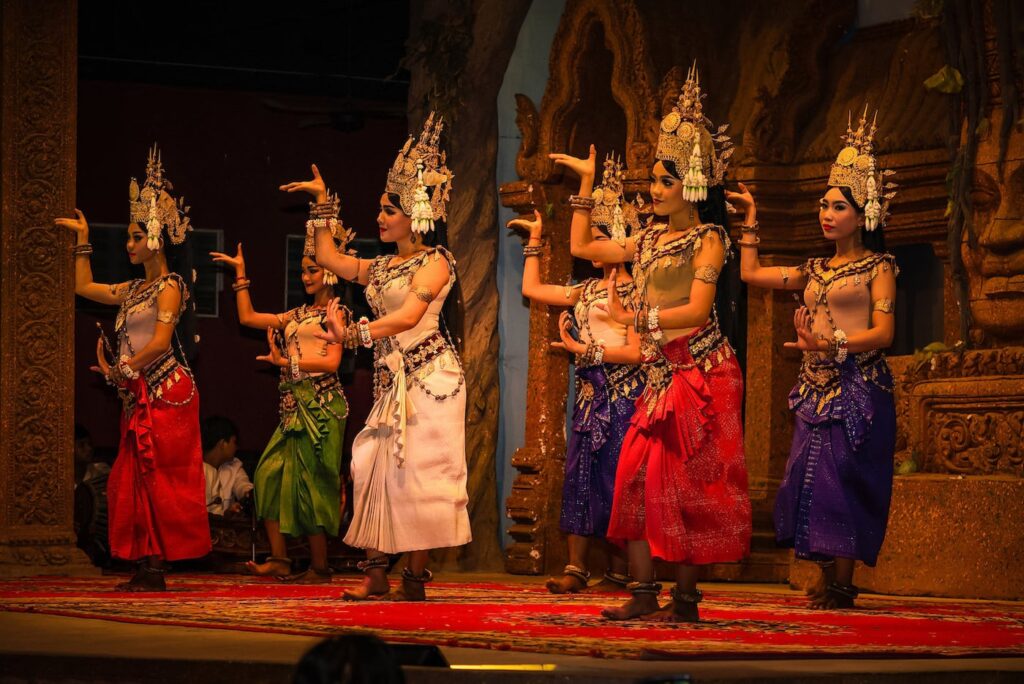
Social dance
Social dance is a form of Cambodian dance that is performed for entertainment and social interaction. Social dance is usually performed by couples or groups of friends who dance together in a casual and fun way. Social dance is influenced by various sources, such as Western music, neighboring countries, and contemporary trends. The music that accompanies social dance is played by a band or a DJ, and it can range from traditional songs to pop hits.
Social dance has many styles and genres that cater to different tastes and moods, such as romantic, cheerful, or energetic. Some of the most common social dances are:
- The Romvong: This dance is also known as the circle dance or the Khmer folk dance. It is one of the oldest and most popular social dances in Cambodia. It involves dancers forming a circle and moving clockwise or counterclockwise around a central point. The dancers follow simple steps and gestures that match the rhythm and lyrics of the song. The Romvong is often performed at weddings, parties, or festivals.

- The Saravan: This dance is also known as the slow dance or the Khmer love dance. It is a romantic and intimate dance that is performed by couples who hold each other closely and sway gently to the music. The Saravan is usually performed at nightclubs, bars, or private parties.
